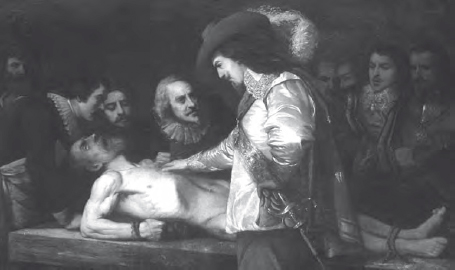Skeptical and Natural PhilosophyMedicine and Philosophy |
How did William Harvey discover the closed circulatory system? |
William Harvey (c. 1578 or 1579–1657) was educated at Cambridge and studied at Padua, where Copernicus (1473–1543) had also studied. His father-in-law was a prominent London physician, and Harvey became a doctor at St. Bartholomew’s Hospital and a fellow of the Royal College of Physicians. Ibn al-Nafis (1213–1288) and Michael Servetus (1511–1553) had described pulmonary circulation earlier, but Servetus’ work was lost by the time Harvey had begun his research.
Hieronymus Fabricius, who taught Harvey at the University of Padua, had discovered valves in veins, but Harvey was not satisfied with his explanation and sought a more encompassing theory of how blood moved in the body. In his 1628 Exercitation Anatomica de Motus Cordis et Sanguinis in Animalibus (An Anatomical Exercise on the Motion of the Heart and Blood in Animals) Harvey claimed that the heart pumped blood throughout the body in a closed system. Galen had believed that venous blood came from the liver and arterial blood from the heart, each of which sent blood to the different parts of the body where it was consumed.
Harvey recorded his observations during vivisections (dissections of live animals), quantifying the amount of blood that passed through the heart and counting the beats of the heart. He estimated the amount of blood pumped in a day, depending on the size of the heart. He postulated two circulatory loops—one to the lungs and the other to the vital organs—and he correctly described the role of the valves of the veins in returning blood to the heart. Harvey was personal physician to both James I and Charles I. That gave him the opportunity to vivisect deer from the royal parks for his experiments and demonstrations. He was also able to observe a pumping human heart in the hole of the chest of a viscount’s son, whose wound had been covered with a metal plate. Harvey was not able to observe capillaries and could not account for the transfer of blood from arteries to veins.

